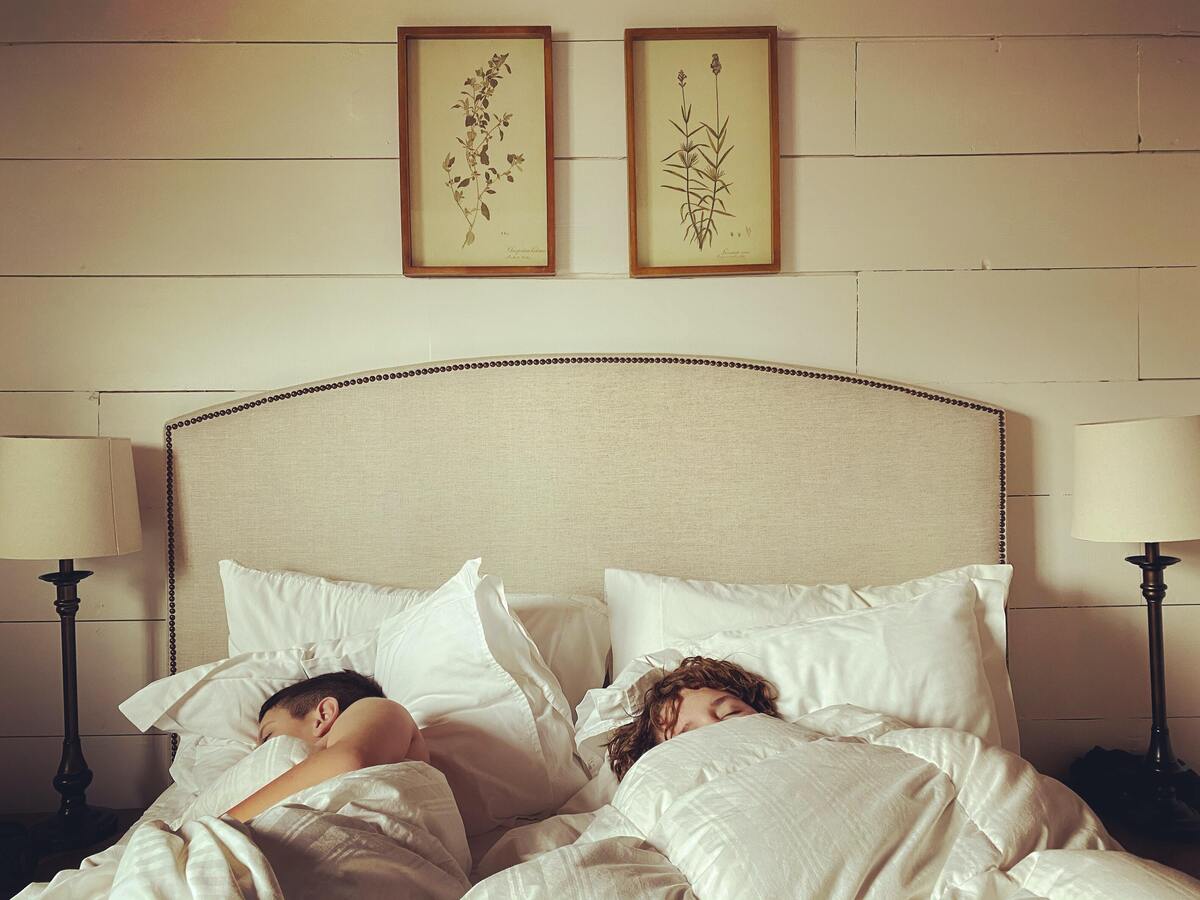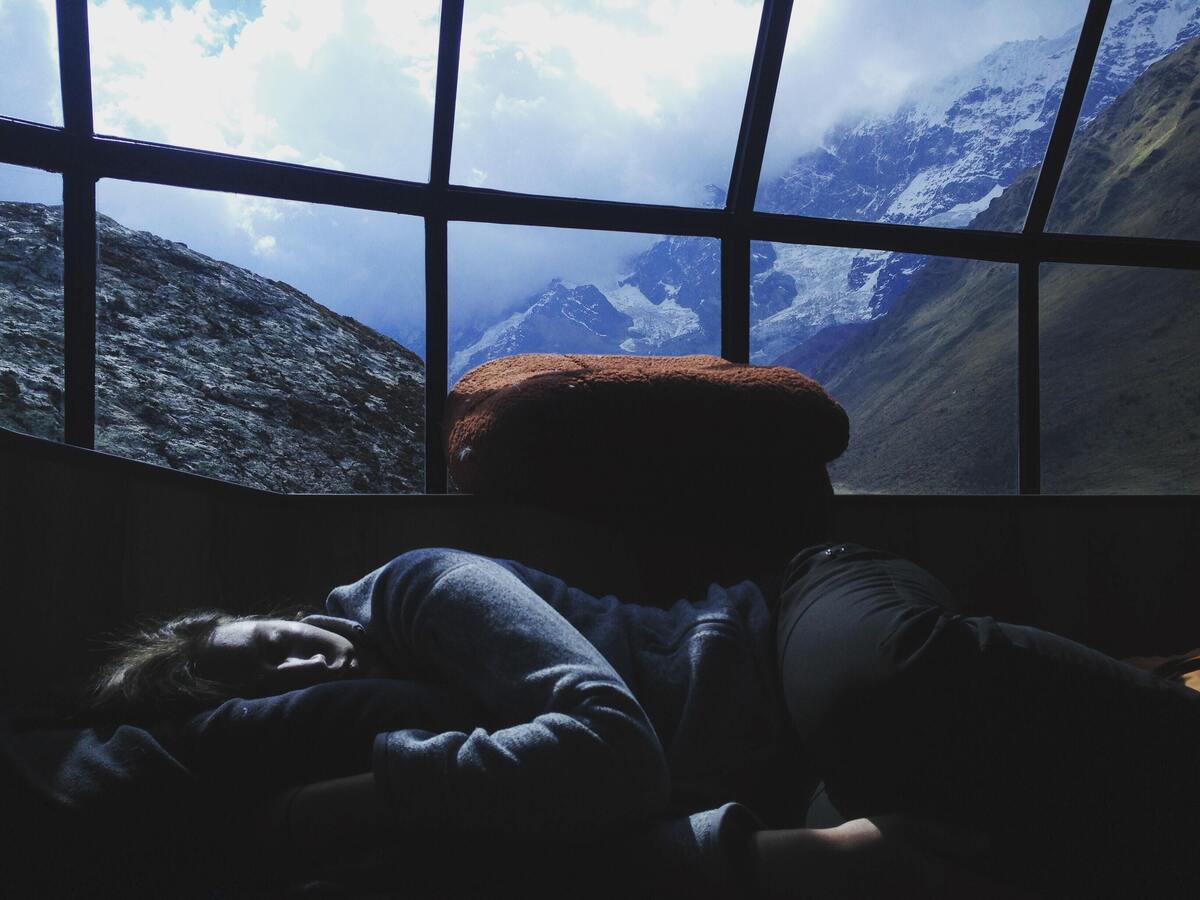Table of contents
General considerations about what sleep apnea is

Sleep apnea, also known as Obstructive Sleep Apnea Syndrome (OSAS), is a disease that causes the obstruction of the airways. This is a chronic disease that evolves if left untreated.
The obstruction caused by apnea can be partial or total of the respiratory tracts. These stops occur several times during sleep. This happens because the air is prevented from reaching the lungs. Several factors contribute to the development of sleep apnea such as, relaxation of the throat and tongue muscles, increase in the size of the tonsils and adenoids, among others.
Throughout this article you will better understand what sleep apnea is, information such as: symptoms, diagnosis, its main causes, possible treatments, the existing types of apnea, symptom control and surgical procedures.
Sleep apnea, main symptoms and confirmation of diagnosis

Sleep apnea is caused by a temporary cessation of breathing, or shallow breathing during sleep, leading people to snore and have a disturbed sleep in which there is no rest and relaxation.
In this part of the article you will discover more details about what sleep apnea is, what the main symptoms are, how the diagnosis of the disease is made and what the relationship between snoring and apnea is.
What is sleep apnea
Sleep apnea is a disease which causes several momentary respiratory stops or even shallow breathing during sleep. These respiratory stops cause people to snore and makes them unable to rest during sleep and to regain their energy.
In this way, people affected by this disease feel sleepy during the day, besides that sleep apnea causes other symptoms such as concentration problems, headaches, irritation and even impotence problems.
The main cause of sleep apnea is the obstruction of the respiratory tract due to a relaxation of the muscles of the pharynx. Other factors which can increase the risks of developing obstructive sleep apnea is the use of alcohol among other habits which we will see later on.
The relationship between snoring and sleep apnea
There is a great connection between snoring and sleep apnea, but not all snoring is related to the disease. Snoring is caused by the vibration of the tissues of the soft palate during the passage of air during breathing. Thus, the more effort people make to breathe, and the more flaccid the tissues, the more the snoring sound will be.
This obstruction during nocturnal breathing can cause complete or partial apnea, that is why snoring may or may not be related to obstructive sleep apnea. Therefore, when people snore loudly, and present daytime sleepiness and tiredness without apparent reasons, it is important to seek the opinion of a health professional.
Sleep medicine professionals belong to different health sectors such as neurology, otorhinolaryngology, pneumology, among other specialties.
The main symptoms of sleep apnea
Now get to know some of the main symptoms presented by those who suffer as sleep apnea:
- Very loud snoring during sleep;
- People wake up several times in the night, for seconds and imperceptibly;
- Choking or breathing stops during sleep;
- Feeling sleepy and tired during the day;
- Losing urine during sleep, or waking up to urinate;
- Present with headache in the morning;
- Reduced performance at work and studies;
- Present concentration and memory problems;
- Display irritability and depression
- Sexual impotence.
Obstructive sleep apnea appears more frequently in people over 50 years old, and the quantity and intensity of the symptoms change according to the severity of the disease.
How to confirm the diagnosis
To discover and confirm the diagnosis of sleep apnea, it is necessary to seek the advice of a medical professional, who will recommend some tests such as polysomnography. This test analyzes the quality of sleep, measuring brain waves, the movement of respiratory muscles, the amount of air that flows during breathing and the level of oxygen in the blood.
In this exam it is possible to identify obstructive sleep apnea, as well as other diseases that interfere in the quality of sleep. Besides this, the doctor will do a general evaluation of the person's clinical history and physical exams of the lungs, face, throat and neck. This clinical analysis will help to define the type of sleep apnea that is occurring.
The main causes of sleep apnea

There are several causes that lead to sleep apnea, ranging from people's physical structure, to health conditions. Usually, it is not just one factor that leads to apnea, but the set of several physical problems.
In this part of the article we will better understand what causes lead to the development of obstructive sleep apnea. Below we will talk about the various causes of this problem.
Anatomical alterations
One of the factors that is related to the appearance of sleep apnea is the anatomical alterations that can occur in people's organism. One of them, for example, is the increase in tonsils and adenoids, especially in children.
Other anatomic alterations that can cause the disease are retrognathism, (which is the decrease in the size of the lower jaw, or the chin moved backwards), increase in the circumference of the neck, nasal septum deviation, nasal polyps and hypertrophy of the cornets (structure of the nose). All these alterations can be discovered by medical specialists.
Nasal congestion
Not always the causers of apnea are complicated problems, the disease can be caused by simpler situations such as nasal congestion, for example, which is a more common problem that people face.
Nasal congestion can be linked to infectious conditions or even chronic conditions such as allergic rhinitis, causing obstructive sleep apnea. Again, a healthcare professional is essential to understand what may be causing the problem.
Age or obesity
Other factors can also lead to sleep apnea such as age and obesity. In the case of age, with aging people go through a process of sagging, which also affects the tissues of the oropharynx (throat and tongue) causing obstruction of the air passage. This problem is usually more common in people over 65 years old.
In the case of obesity, there is fat accumulation in the structures that are part of the pharynx and tongue, which causes a reduction of space for air passage. Thus, weight gain is one of the risk factors that can lead to the development of apnea.
Alcohol and cigarette consumption
The ingestion of alcoholic beverages also favors the development of sleep apnea, because alcohol causes a greater relaxation of the throat muscles. This fact can interfere with the way the brain controls the muscles involved in breathing, thus breathing becomes more difficult and apnea occurs.
Another factor causing obstructive sleep apnea is the use of tobacco, or smoking daily. This element causes inflammation of the upper airways, which also causes interference in the brain's control mechanisms over breathing.
Consumption of tranquilizers, muscle relaxants and opioids
People who take tranquilizers, muscle relaxants or opioids can also develop the disease. This is because these drugs cause the muscles in the mouth and throat to relax.
Another point affected by the use of tranquilizers, muscle relaxants and opioids, is that they act directly on the brain of people. Thus, they reduce the control exercised by it over the muscles of breathing.
Types of sleep apnea

Sleep apnea, besides having several causes, also has different types of the disease. To find out what type of problem is occurring, and also which type of treatment is more suitable in each case, a doctor should be sought to make a deeper analysis.
In this part of the article you will find the explanation about the three existing types of obstructive sleep apnea. Understand what Obstructive Sleep Apnea, Central Sleep Apnea and Mixed Sleep Apnea look like.
Obstructive sleep apnea
One of the types of apnea that affect people is the Obstructive Sleep Apnea, it is the most common, because it is caused by several reasons, all related to physical factors such as the relaxation of the muscles of breathing.
In addition, other causes of this type of apnea are connected to the narrowing of the air passage in the throat, anatomical alterations such as thickening of the neck, increase of the nasal adenoids and also the reduction or displacement of the jaw.
Central sleep apnea
In the case of Central Sleep Apnea, its emergence occurs right after the person goes through some disease that causes a brain lesion, which alters the brain's ability to control the muscles responsible for breathing.
The diseases that affect the brain are brain tumor, stroke or even degenerative brain diseases. Again, to better understand what causes sleep apnea and what are the best treatments, it is necessary to seek the help of a health professional.
Mixed apnea
The last type of this disease is Mixed Sleep Apnea, which gets its name because it has two causative factors. In the case of Mixed Apnea it is caused by both the relaxation of the breathing muscles in Obstructive Apnea and brain problems caused by degenerative diseases in Central Apnea. This type of apnea is the rarest to occur.
Besides the three types of sleep apnea mentioned here, it is also possible to develop temporary apnea, which occurs when people go through a process of tonsil inflammation, tumor or polyps in the throat area, which can hinder the passage of air in breathing.
Sleep apnea treatment and the main approaches to control symptoms

The treatments for sleep apnea, as well as the approaches to control the symptoms are varied and depend on the type of apnea. After evaluating the patient's condition, a specialist will indicate the best form of treatment for each case.
In this part of the text, you will learn about some treatment approaches for apnea, we will talk about intraoral appliances, positive pressure device, lifestyle changes, treatment with speech therapist, among others.
Intraoral appliances
Intraoral appliances have the function of increasing the space through which the air passes in the airways. This appliance makes the jaw stay in the correct place, without moving, this collaborates to unobstruct the upper airways.
This device requires a period of adaptation, in addition to the need for periodic controls and adjustments, but people usually adapt easily to its use. Intraoral devices are quite effective mainly in cases of mild to moderate sleep apnea and also in simple snoring.
Positive pressure devices (CPAP)
The acronym CPAP comes from the name in English of this device, Continuous Positive Airway Pressure, in Portuguese it is known as Positive Pressure Device. It looks like an oxygen mask, but its function is to force the entry of air into the lungs.
This way, breathing becomes closer to normal and thus sleep is not interrupted, helping people to relax and sleep more peacefully. The use of this device is indicated for obstructive apnea, in cases where the obstruction of the airways is total. To know which is the best treatment a doctor should be consulted.
Lifestyle changes
Besides devices that help to improve night breathing capacity, the change in people's lifestyle is also of great help to improve the problem. Each case is different, and when consulting a health professional he may suggest some changes such as weight loss and exercises.
These lifestyle changes are beneficial in helping to reduce the pressure on the airways, as well as strengthening the muscles around the airways. Referral for this or other forms of treatment should be done by medical specialists.
Treatment with a speech therapist
Treatment with a speech therapy specialist is of great help for people who suffer from sleep apnea. This treatment can help in reducing the rates of apnea, the degree of severity of the problem, the rates of nocturnal saturation, awakenings and micro-awakenings and even reducing the amount of occurrences during the night.
The health professional may also indicate phonoaudiological treatment as a way to amplify the results of surgeries to treat sleep apnea. This complementation in the treatment can eliminate apnea residues.
Disease control
Sleep apneas, apart from causing oxygenation problems, interruptions in breathing, also cause people to wake up several times during the night. This results in tiredness and sleepiness during the day, lack of productivity and even lack of libido.
Besides these problems, in the long term, the consequences brought by sleep apnea are even more worrying. These people can be affected by hypertension, diabetes, depression, arterial diseases, heart attacks and strokes.
Therefore, seeking professional help to solve this disease will also bring the benefit of controlling other diseases. Also increasing the quality of life of individuals.
Main surgical procedures for the treatment of sleep apnea

In addition to treatments with devices, changes in habits and lifestyle, there is also the option of performing surgical procedures for the treatment of sleep apnea. This option is usually the last one indicated by health professionals.
Below we will talk about the various types of surgeries that exist such as, surgery to remove tissue, surgery to reposition the chin, to place an implant and to create a new air passage.
Surgery
Surgeries are used as treatment for sleep apnea disease, after other forms of therapy have been tried without success. Each case of apnea has a specific surgery that will be efficient for each individual.
This way, it is necessary to look for a health professional specialized in sleep related problems, who will indicate the best form of treatment. In this indication the patient's opinion is also usually taken into consideration.
Surgery to remove tissue
After trying other types of treatments for sleep apnea, there are also several types of surgery that can be indicated to solve this problem. In a consultation with a specialist doctor, and after analyzing the case, surgery to remove tissue can be indicated.
The surgery to remove tissue, as the name implies, is performed to remove the excess tissue in the back of the throat, as well as the tonsils and adenoids. In this way, it is avoided that these tissues obstruct the air passage, causing snoring and apnea.
Chin repositioning surgery
One of the surgical procedures indicated for the treatment of sleep apnea is chin repositioning. This surgery is recommended when there is a retraction of the chin, which causes a reduction of the space between the tongue and the back of the throat.
With the correct positioning of the chin the air passage is easier, which helps to improve the problem of sleep apnea. A health professional will know if this procedure is the most suitable for each case.
Surgery for placing implants
Another procedure that may help solve the problem of sleep apnea is implant placement surgery. This procedure can be used as an option to tissue removal and will also be of great help in treating the condition.
This implant helps to move the soft tissues away from the mouth and throat. With this, the air passage becomes more fluid, causing the person to breathe more easily, and thus have a more relaxing and refreshing sleep.
Surgery to create a new air passage
The surgery performed to create a new air passage is only used in extreme cases, when the patient is at risk of death due to very severe sleep apnea. In a consultation with a specialist, he will analyze the situation, verify with exams the possible damage caused by the apnea, and then decide for this surgery.
After trying all other forms of treatment for apnea, and verifying that none of them was effective, the specialist will indicate the surgery. This is a very complex surgical procedure, because a channel is made in the throat, which will allow the passage of air to the lungs.
By knowing what sleep apnea is, is there anything that can be done to help those who suffer from the disorder?

Knowing better what sleep apnea is, it will be easier to seek help from a health professional. This professional will analyze the patient's history, request tests such as polysomnography to better understand the case of sleep apnea.
Initially, the specialist will indicate some changes in lifestyle, including physical exercise, reduction of alcohol intake, as well as elimination of tobacco use. In addition, it is possible that combined treatments between several specialists are done, for a treatment with better results.
In today's text we have tried to bring as much information related to sleep apnea problems as possible. We hope that this information has been useful.

